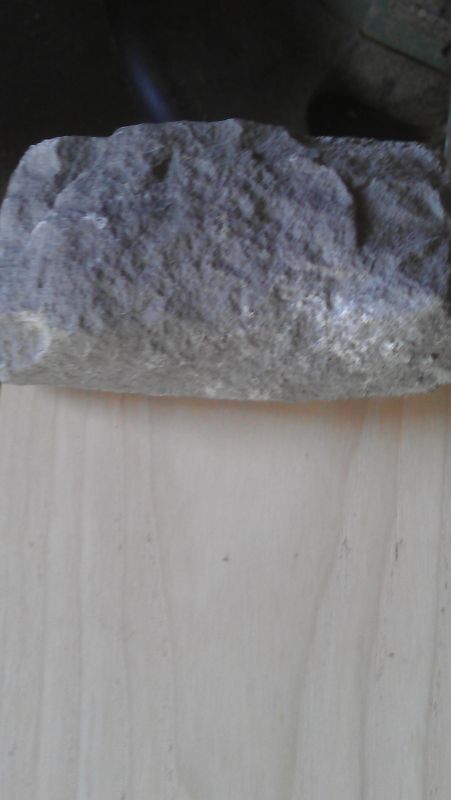Fisheye in a Kitchen Re-Finish
Cleaning and seal-coat advice for a kitchen refinish job plagued with fisheye problems. March 3, 2010
Question
What a nightmare! I finished the bones of a kitchen today - couple of small fisheyes, but nothing major. Gathered up all the doors and set them up in the shop. Took a rag soaked in mineral spirits and wiped them all down, then proceeded to give them a first coat of lacquer (Valspar), and I've got more fisheye than I know what to do with. Thankfully I started on the backs and not the faces, but holy smokes!
I've heard pre-coating with shellac before continuing with lacquer topcoats will eliminate fisheye. Can anyone here confirm this before I waste a full day and hundreds in product?
Forum Responses
(Finishing Forum)
From Paul Snyder, forum technical advisor:
Are you finishing over an existing finish? If so, what prep work did you do? Why wipe down with mineral spirits?
From the original questioner:
Yes, I am refinishing a kitchen. Original cabinets were clear over maple and I'm shading to match cherry color.
As for prep, I just sanded and cleaned with spirits to remove any wax residue. Either I picked up a bunch of wax on the rag and contaminated all the doors, or they have somehow gotten silicon all over them, because I've ended up with a school of fisheye!
The Valspar pre-cat I'm using is self sealing, so after a good sanding the second coat hid the majority of the mess left by the first. Instead of sealing with shellac before applying topcoats to the faces of these doors, is there a better way to get them good and clean? What solvent will dissolve silicon residue without damaging the original finish?
From contributor R:
Fisheye can be caused by other stuff besides silicone. You need to do a proper de-greasing and general cleaning. You've done this before - refinish a kitchen, right? You may be just covering up a problem with the new finish. It could de-lam if not prepped in a more thorough way.
From contributor B:
Mineral spirits is a greasy, slow drying solvent; it causes more problems in wood finishing than it solves. If you have to wipe something down, use acetone or toluene. They dry fast and remove surface contaminates.
From contributor A:
I would not trust the mineral spirits wipe method. You have no idea what is on those cabinets. Somebody could have Pledged the entire kitchen 100 times. Mineral spirits is a solvent for a narrow range of materials. Lacquer thinner would have been a better choice, because it is a combination of about 10 different solvents.
Kinda like using a broad spectrum antibiotic when dealing with an unknown infection. The rubber glove approach would be shellac, which is a good barrier coat when refinishing kitchens.
From contributor J:
1. Naphtha is the solvent of choice for cleaning. Mineral spirits is too oily and not strong enough. Acetone, toluene or lacquer thinner may be too strong for the existing finish to withstand. You want to clean the old finish, not strip it. Change out rags frequently or you will just wipe any contaminates around rather than remove them. Wipe down with naphtha before and after sanding.
2. Dewaxed shellac is a good barrier coat to seal in any remaining contamination and prevent fisheyes and should be compatible with the Valspar pre-cat. Bulls Eye Sealcoat is dewaxed shellac.
From contributor E:
I hired a new finisher recently who showed me a way to remove fisheyes that I have not seen discussed. We had a large antique dining table last week with some of the worst fisheye I have ever experienced. What he did to remove it was wet sand with 400 grit paper and naphtha. I followed behind with clean paper towels. After 1 pass with the wet sanding, we wiped the entire table down with a clean rag and naphtha. He then followed this with a light coat of vinyl sealer followed by 2 coats of pre-cat lacquer. Not sure if it works in every situation, but it worked out great for us.
From the original questioner:
Thanks for all the tips! I decided to strip and re-do the doors that had the worst fisheye, which turned out to be the best solution. I looked around for naphtha, but every place I went to the people either didn't know what I was talking about or didn't carry it. So I used methyl hydrate to clean all the doors, then sanded, then wiped again, first coated with lacquer, wiped again, sanded, wiped again, spot primed any stubborn spots with dewaxed shellac out of a spray can, then did two finish topcoats. They turned out nice! Thanks again for all the advice!
From contributor A:
Naphtha can be bought at any hardware in America. It is labeled VM&P (Varnish Makers & Painters) Naphtha. The evaporation rate is faster than mineral spirits with less petroleum (the oily feel). It is used as a reducer when brushing varnish or oil based paints unless it is really hot out. If you use mineral spirits to reduce, it gets thinner and also takes longer to dry, which often leads to runs. Naphtha is likewise the preferred reducer when spraying in all situations for oil based paints, polys, and varnishes. If you reduce paint 20% by volume with mineral spirits it will run when sprayed on vertical surfaces. As mentioned it is also a good cleaning solvent because it evaporates in a reasonable amount of time. Also it is not aggressive enough to damage most substrates.
From contributor L:
I think there is an issue with vinyl sealers and other types of lacquer. I have had this problem. Used sealcoat or shellac.
